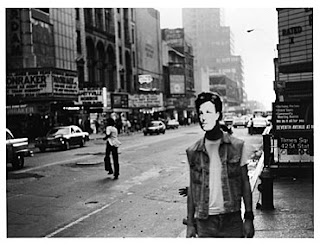The subjects of his photo are very unusual. He takes objects or sites that are not considered normally beautiful and makes them into extraordinary art. The sites are common objects that contribute to our daily lives but things we would rather hide away for plain view such as a quarrying, refineries and recycling yards. He gives these objects new meaning by turning them from unpleasant to stunning images.
His photographs show the dependence on humans in their quest for a good life on nature. However through the photos we can see how we are destroying the one thing we are most dependent on. His works include portfolios on mines, quarries, ship, oil, China, Australia and water. My favorite of these is Mine and Water. The water portfolio has a sub-section on the Gulf of Mexico Oil Spill.
In 2006, a documentary film, Manufactured Landscapes, was made about Edward Burtynsky. It featured his photographs of landscapes that were affected by human intervention.
Oil Spill #13,
Mississippi Delta, Gulf of Mexico, June 24, 2010
Mississippi Delta, Gulf of Mexico, June 24, 2010
Oil Spill #2,
Discoverer Enterprise, Gulf of Mexico, May 11, 2010
Discoverer Enterprise, Gulf of Mexico, May 11, 2010
Mines #15
Inco Tailings Pond, Sudbury, Ontario 1985
Inco Tailings Pond, Sudbury, Ontario 1985
Mines #17
Lornex Open Pit Copper Mine. Highland Valley, British Columbia 1985
Lornex Open Pit Copper Mine. Highland Valley, British Columbia 1985
“Burtynsky calls his images ‘a second look at the scale of what we call progress,’ and hopes that [they] acquaint viewers with the ramifications of our lifestyle.” -Washington Post


























